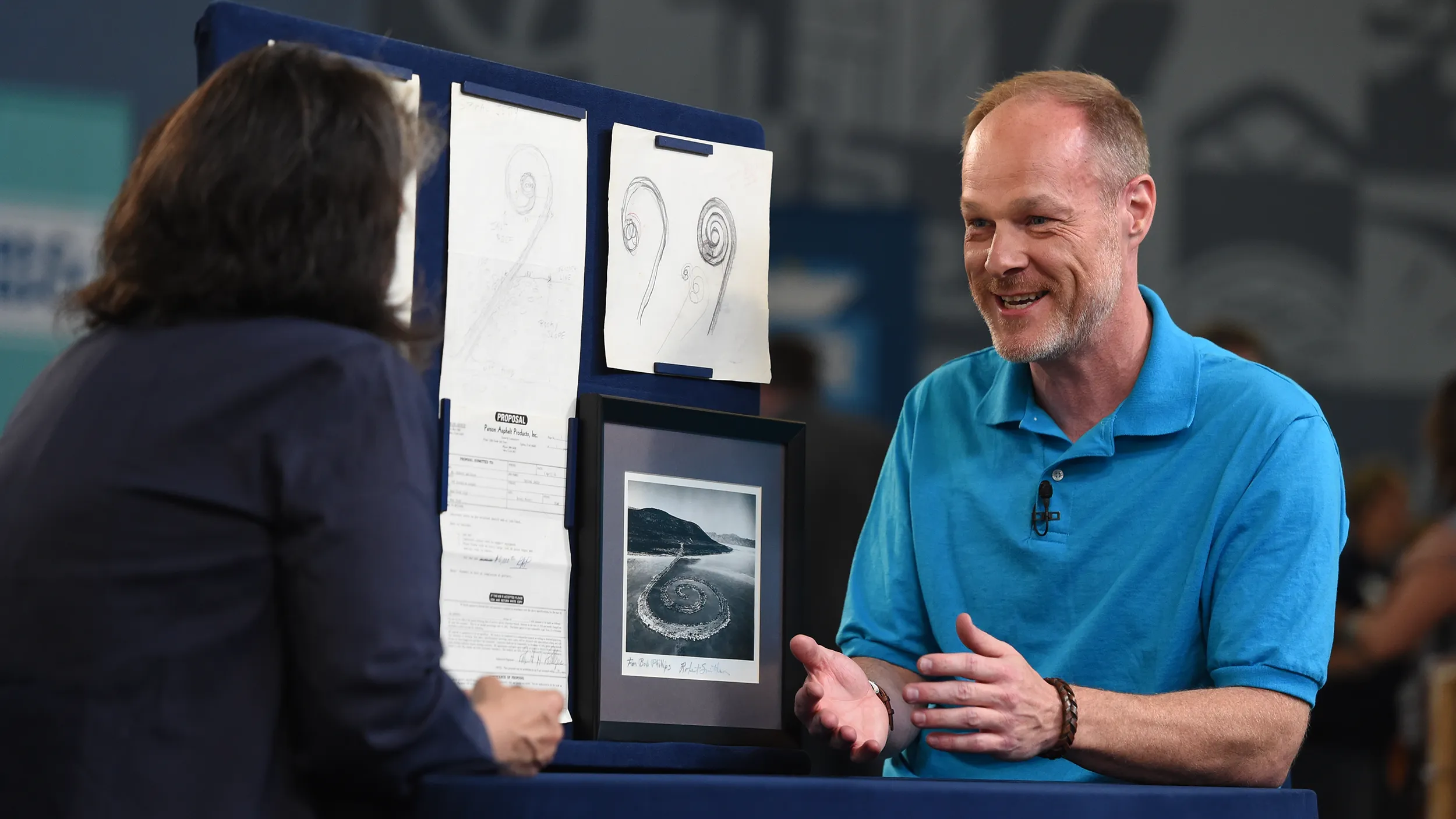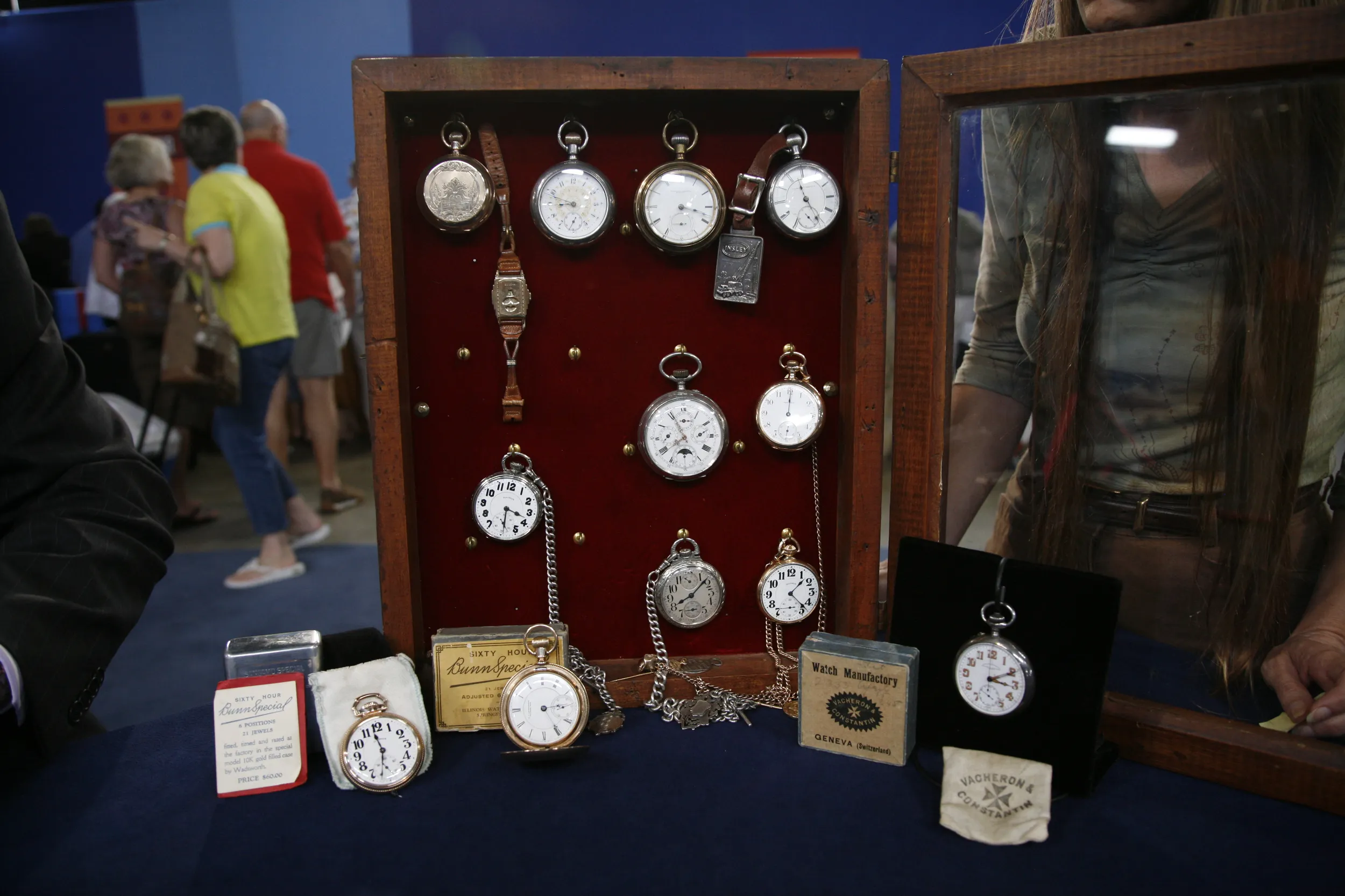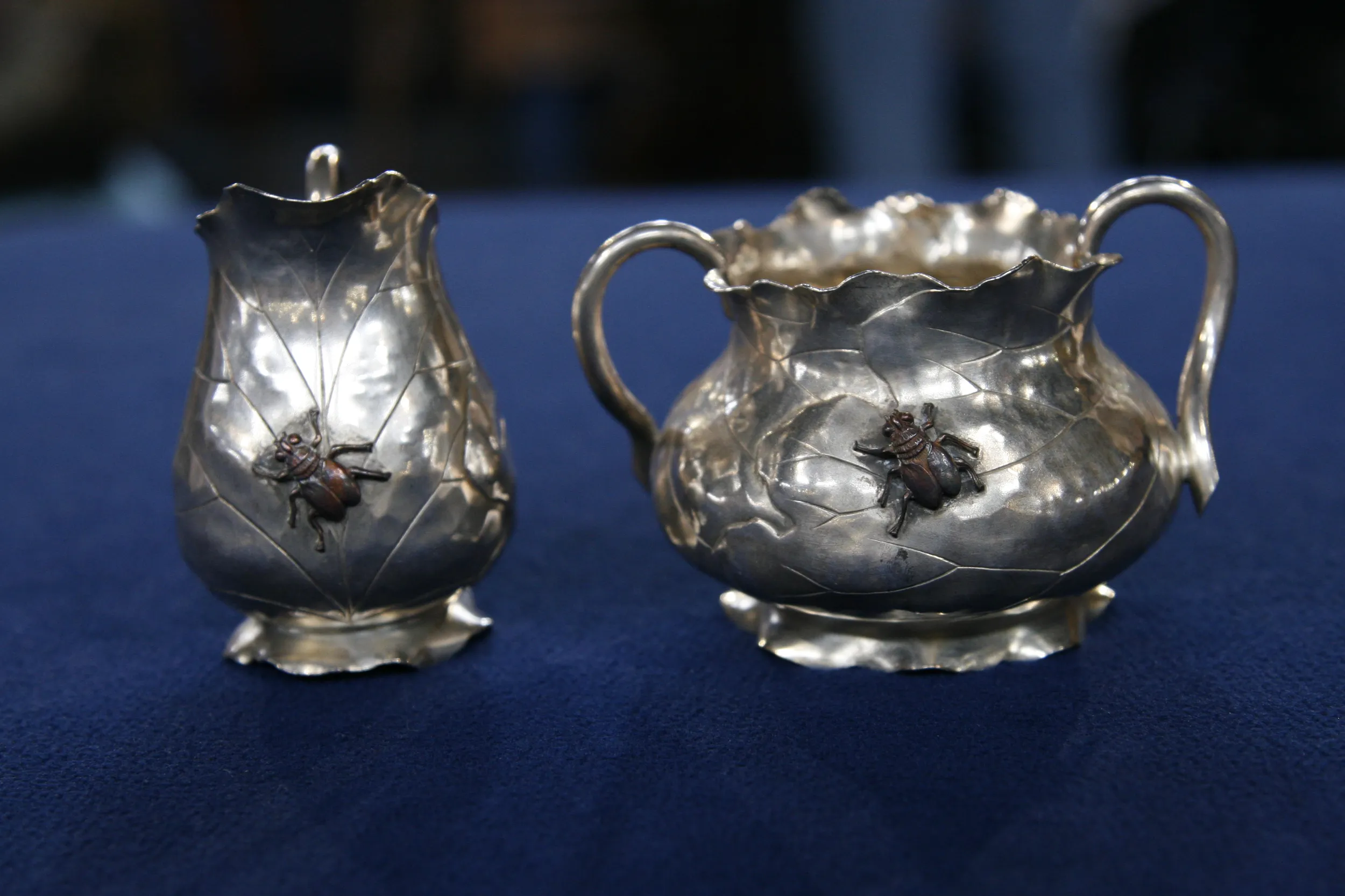GUEST: I brought in my grandmother's Chinese silver set.
APPRAISER: And do you know how your grandmother acquired it?
GUEST: I believe the story is, is that when she went on her honeymoon in 1920 to Shanghai, and commissioned the set.
APPRAISER: Where did she get married?
GUEST: Here in Salt Lake City, I believe.
APPRAISER: That's a long journey.
GUEST: It was.
APPRAISER: Back in the 1920s.
GUEST: However, she married a fellow from the Hawaiian Islands.
APPRAISER: Aha. Well, so she was used to traveling.
GUEST: Yes. (chuckles)
APPRAISER: Well, what we have here is a Chinese export made for the American market.
GUEST: Mm-hmm.
APPRAISER: Silver and carved cinnabar, 72-piece cutlery set. Cinnabar is a mineral sulfide that they crush and mix with lacquer to make this color.
GUEST: Oh.
APPRAISER: It's prized because of its really intense red-orange color.
GUEST: Mm-hmm.
APPRAISER: And that's what the handles are.
GUEST: Aha.
APPRAISER: And it was made in Shanghai by a very prominent silversmith named Zee Wo. Z-E-E W-O. His shop started in the late 19th century and went to about 1930. So your date of roughly 1920 rings true. I also wanted to point out the signature of the silversmith. And we can see that very clearly right here on the back of the fork. It is signed with a Chinese character, and then it's signed in our alphabet, "Zee Wo." There was a big taste, a big fad, for things Chinese in America at that time. Really from the late 19th century up to about the 1930s. The etched design is really nice. They have this bamboo design that would have been etched in with a sharper, stronger instrument than the silver. It's pretty special to have this many pieces, 72 pieces. This set up here, the 36-piece set in its original box, with the original label...
GUEST: Mm-hmm.
APPRAISER: I think the whole 72-piece service is probably worth somewhere in the $5,000 to $7,000 range at auction.
GUEST: Mm-hmm, that's nice. (chuckling)











